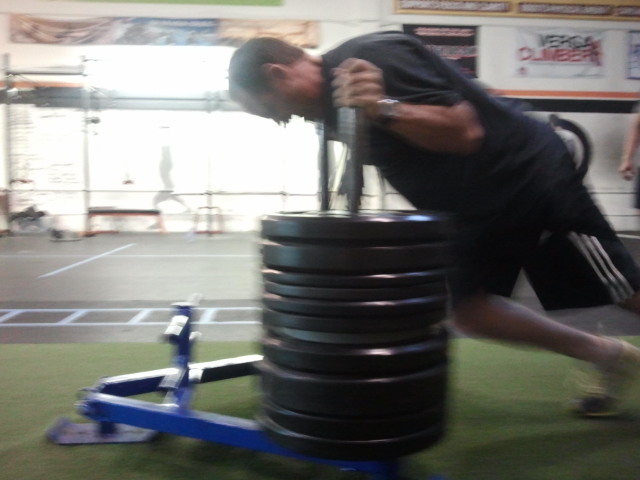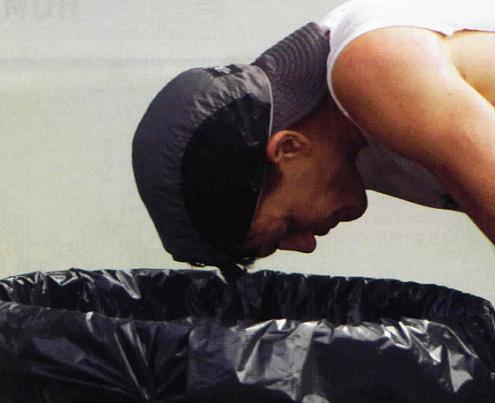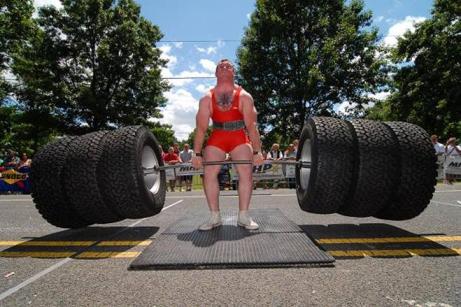When’s the last time you changed up your workout?
Been doing the same thing for years?
Not getting the results you deserve?
Got a nagging injury or pain that you’ve been dealing with for years?
Its time for a change…
Typically gym workouts go something like this:
Step 1: Walk on the treadmill for 5 minutes
Step 2: Lift weights – Chest and Back, Legs, Shoulders and Arms, repeat.
Step 3: Take a class or do cardio – Aerobics classes, treadmills, stair climbers, etc.
Step 4: Stretch – touch your toes, butterfly, talk and leave.
At Innovative Results, we take a slightly different approach.
In order to get the most out of your workouts, you have to stimulate the body in a lot of different ways. Warm up should be so much more than a 5 minute walk. You must stimulate the nervous system, to turn on your body and prepare it for the work ahead. Your strength portion should involve movement patterns, in multiple planes of motion, using a variety of stimulus (weights, Kettlebells, body weight, resistance bands, ropes, and more). And conditioning is our word for ‘cardio’. Conditioning builds your cardiovascular system, increases stamina and endurance and is important for every person.
Here’s a breakdown of a workout:
DISCLAIMER: Developing the right workout for an individual can become very specific. These are not recommendations, but think of them more like a rough template for your workouts. If something doesn’t make sense, or stimulates a question, please ask us by leaving a comment. We will get back to you accordingly.
Part 1 – Preparation – pick a few of the following and spend about 10-20 minutes getting your body prepared for work.
SMR – Self Myofascial Release – This includes foam rollers, Trigger Point Tools , Rumble Rollers, Sticks and other items.

Ankle/foot Mobility – most people’s feet and ankles are weak and stiff. Neglecting them can quickly reduce performance and can lead to injury throughout the body. Your feet are the foundation of your body, so take some time to keep them happy.
Dynamic Stretching Series – a variety of stretching can be used before a workout. We prefer to walk people through a series of dynamic movements to open up the ankles, hips, upper back and shoulders. This increases blood flow, primes the muscles and opens up stiff joints.
Eischen’s Yoga – Jon Hinds has an incredible DVD on this subject and these movements have become a foundation of our program. These are perfect for beginners looking to develop stability, but are also incredible for advanced athletes to use for warm ups or recovery.
Core Series – I hate using the word ‘CORE’, because it has been abused for so many years. My definition of the core includes everything except the legs and arms. Shoulders, upper back, midsection and hips. These muscles play a vital role in our movement and are involved in a variety of tasks. Some stabilize, while others are prime movers. Depending on the person, we need to make sure these guys are turned on and functioning correctly before we move on to bigger, heavier, more challenging exercises.
Corrective Exercise to address weak links in the chain – We all have our weaknesses. Maybe its from an old injury or long hours at the office, but either way, we need to expose these weaknesses and address them to look, feel and perform at our best.
Part 2 – Fire up the Engines – I like to include all of these in each workout. Use proper progressions to match your ability level.
Locomotion – This can include a variety of running, side shuffles, karaoka, butt kickers, skips, high knees, etc. Since moving around on our feet is the foundation of movement, it is important to groove these patterns.
Plyometric progression – Plyometrics became big in the 90s, mainly with athletes, but beware. While properly using plyometrics can be beneficial for almost everyone, doing them incorrectly can quickly lead to injury. Start by learning how to land correctly, then you can progress into bigger and faster movements.
Med Ball Series – Medicine balls are incredible tools. They can be used in many ways, in many different directions, using a variety of tempos. You can do simple movements or progress to more explosive movements, like throwing. This is a great way to groove movements and create explosive power in different movement patterns.

Part 3 – Strength Work – Getting stronger is vital for everyone. Sometimes this can start as simple as isometric stability work, but it can also progress into heavy lifts, carries and other movements. Exercise variables, such as movement pattern, sets, reps, rest, and tempo can all be altered to fit your goal and ability level.
Use gravity or other tools to challenge the body in a variety of ways. Bodyweight, weights, bands, sleds, stones, ropes or other tools can be used. Don’t get stuck doing the same exercises for years.
Typically Compound Movements – Isolated exercises (works one muscle) have their place in the strength world. When someone has an imbalance or injury, it is important to isolate that muscle and strengthen it. After some focused effort, then it is important to integrate that muscle back into larger, compound (multiple muscles) movements. Remember, the body moves by using a combination of muscles, controlled by a network of nerve cells. Stability, strength and power all stem from a clear line of communication between the nerves and muscles. Utilizing a variety of compound movements helps open up these lines and helps us move better and more efficiently.
Proper progression of each movement is important. People should start with stability exercises first. Once they can stabilize and maintain integrity with basic movement, then we can add resistance. Strength work is more difficult and requires a foundation of control and coordination. As strength is developed, then we can safely progress into more explosive, power type movements. There are literally thousands of movements, but a good coach can tailor make a workout to fit the ability level and goal of each person.
Planes of motion – Sagital – Frontal – Transverse. The fitness world seems to have gotten stuck in the sagital plane. Most exercises are some variation of forward and backward (push/pull, squat/hinge, etc). The real world moves in all directions, especially in sports. We train people in every direction to ensure 360 degrees of strength and to resist against injury.
Teaching the body to work as a unit, strengthen the chain of muscles involved and move toward desired outcome (muscle, reduced bodyfat, performance, etc)
Part 4 – Conditioning

Sometimes conditioning can be combined with the rest of the workout, but it can also be reserved for the end of workouts…Depends on the workout and goal of the day.
I reserve the bulk of this work for the end, so that the body is not exhausted during the strength portion of the workout.
Our body uses 3 basic energy systems: Aerobic (3min +), Lactic (20sec – 1min) and Alactic (0 – 12 sec), so be sure to test and work all systems. In the 80s, aerobics dominated the market place, but today high intensity work seems to have taken over. I believe that everyone needs some balance of all three to look, feel and perform at their best.
Part 5 – Relax and Recover
Finishing a tough workout and walking out the door is NOT ideal. I’m sure that you’ve worked out hard, driven home or to work, and had a hard time getting out the car.
Take some time to relax after your effort.
Cool down starts by allowing the heart rate to reduce from the workout.
Can also include Trigger Point, static stretching, ice, contrast showers, breathing techniques and proper nutrition.
Using a variety of these techniques can allow you to do more work, with less pain and better results over time.
So, there ya go. A quick template that, hopefully, helps you put together a better, more inclusive workout. We could literally talk for days on more information, but this should stir up some questions and we can always dig into more detail on other posts.
Hope this helps out!
Interested in This Style of Workout?
Schedule your FREE Trial Today!


